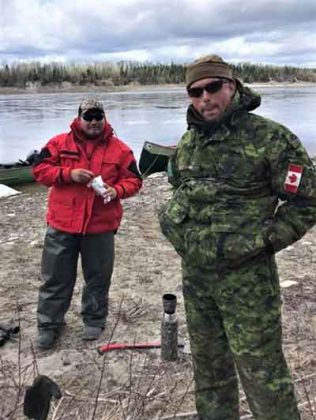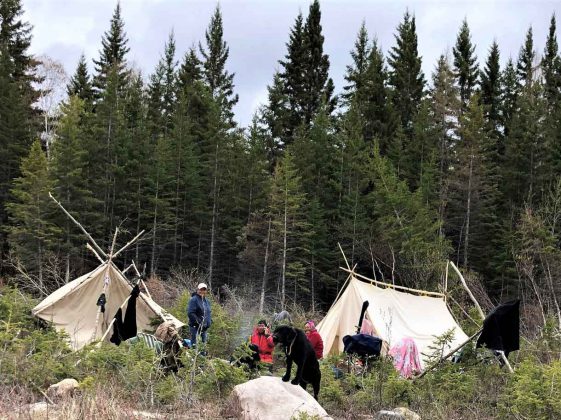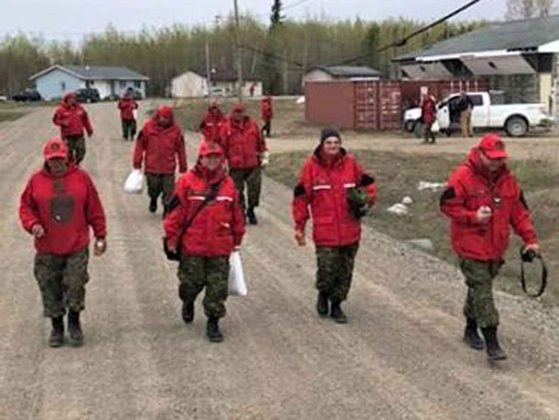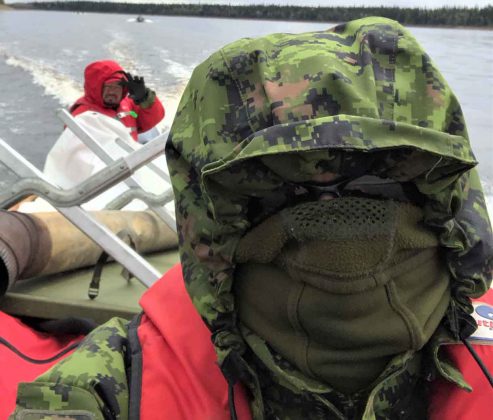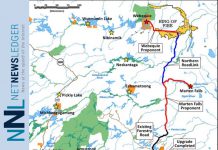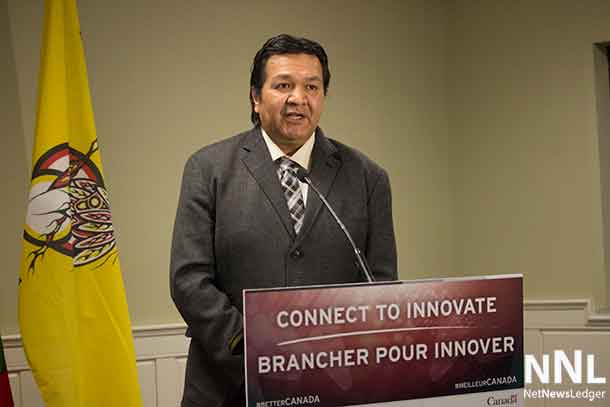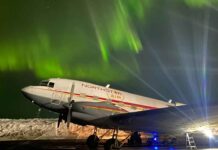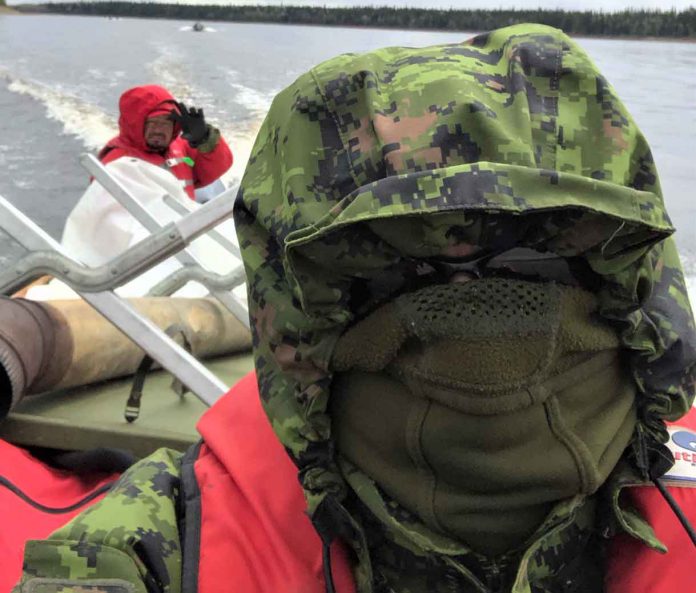
THUNDER BAY – A group of Canadian Rangers from three First Nations in Northern Ontario have completed a long range patrol by freighter canoe on the Albany River.
“We had an excellent trip,” said Warrant Officer Carl Wolfe, a Canadian Army instructor. “We got it done just before the bugs arrive for the summer.”
The Rangers were from Fort Albany and Kashechewan, two remote Cree communities on the James Bay coast, and Pikangikum, an Ojibway First Nation in Northwest Ontario. The Rangers, who are part-time army reservists, travelled about 650 kilometers.
They travelled west on the river from Fort Albany to the remote and small Ojibway community of Marten Falls. “It snowed every day,” Warrant Officer Wolfe said. “It was cloudy and we had isolated showers. There was ice along the shores. We saw a lot of bears, eagles, beavers, and all sorts of wildlife. Everyone enjoyed themselves.”
He said the river was moving quickly because of rain and snow melt and estimated its speed at about 10 kilometers an hour. It made boat handling a challenge.
On the return trip from Marten Falls the patrol came across a stranded family about 130 kilometers east of the community. Their boat engine had broken down and they were camped on a river bank.
“We made sure they were all right and used our satellite phone to call the Nishnawbe Aski Police in Marten Falls and alert them to the problem,” Warrant Officer Wolfe said. “We made sure they had everything they needed while the community sent another motor out to them and we continued our patrol.”
In Marten Falls the patrol conducted a Canadian Ranger recruiting and information session connected to the possible opening of a Ranger patrol or detachment in the community.
Their river patrol is called a long range surveillance patrol by the army.
“It gives Canadian Rangers an opportunity to get on their land and understand changes in their environment,” Warrant Officer Wolfe said, “so that if they have to respond to an emergency hundreds of kilometers from their community they can have intimate knowledge of the land and environment and how to operate on it.”

